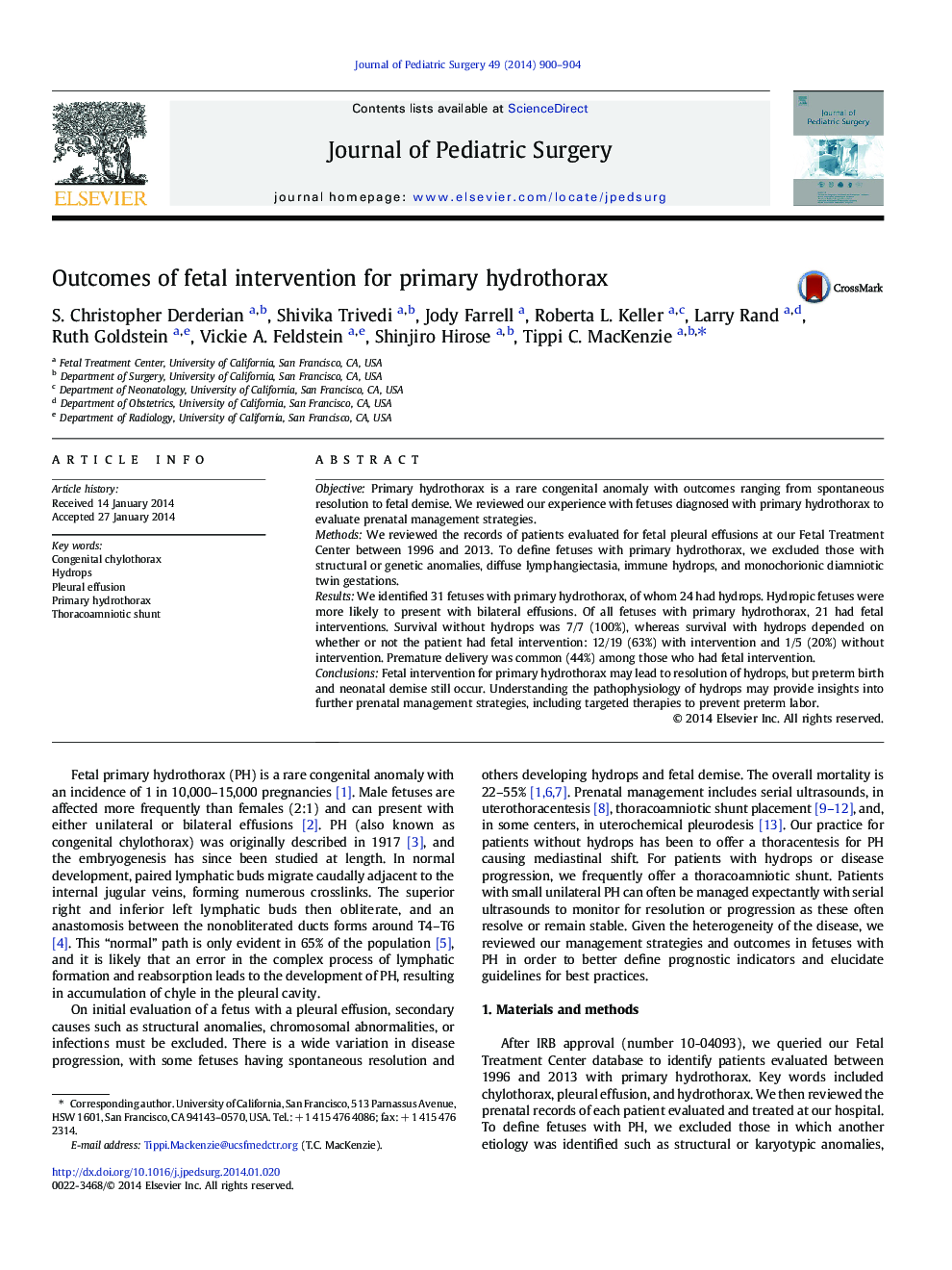| Article ID | Journal | Published Year | Pages | File Type |
|---|---|---|---|---|
| 6217344 | Journal of Pediatric Surgery | 2014 | 5 Pages |
ObjectivePrimary hydrothorax is a rare congenital anomaly with outcomes ranging from spontaneous resolution to fetal demise. We reviewed our experience with fetuses diagnosed with primary hydrothorax to evaluate prenatal management strategies.MethodsWe reviewed the records of patients evaluated for fetal pleural effusions at our Fetal Treatment Center between 1996 and 2013. To define fetuses with primary hydrothorax, we excluded those with structural or genetic anomalies, diffuse lymphangiectasia, immune hydrops, and monochorionic diamniotic twin gestations.ResultsWe identified 31 fetuses with primary hydrothorax, of whom 24 had hydrops. Hydropic fetuses were more likely to present with bilateral effusions. Of all fetuses with primary hydrothorax, 21 had fetal interventions. Survival without hydrops was 7/7 (100%), whereas survival with hydrops depended on whether or not the patient had fetal intervention: 12/19 (63%) with intervention and 1/5 (20%) without intervention. Premature delivery was common (44%) among those who had fetal intervention.ConclusionsFetal intervention for primary hydrothorax may lead to resolution of hydrops, but preterm birth and neonatal demise still occur. Understanding the pathophysiology of hydrops may provide insights into further prenatal management strategies, including targeted therapies to prevent preterm labor.
